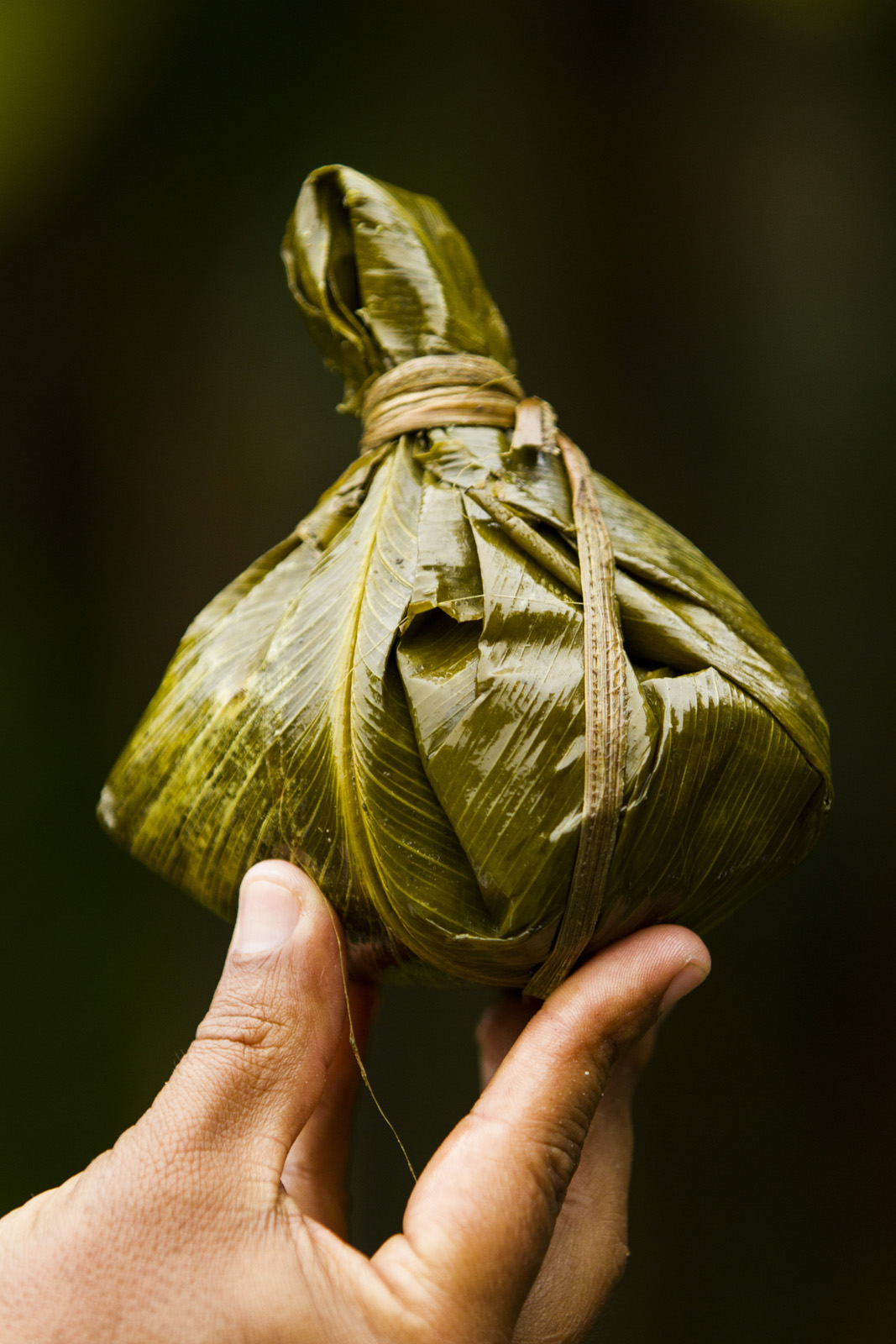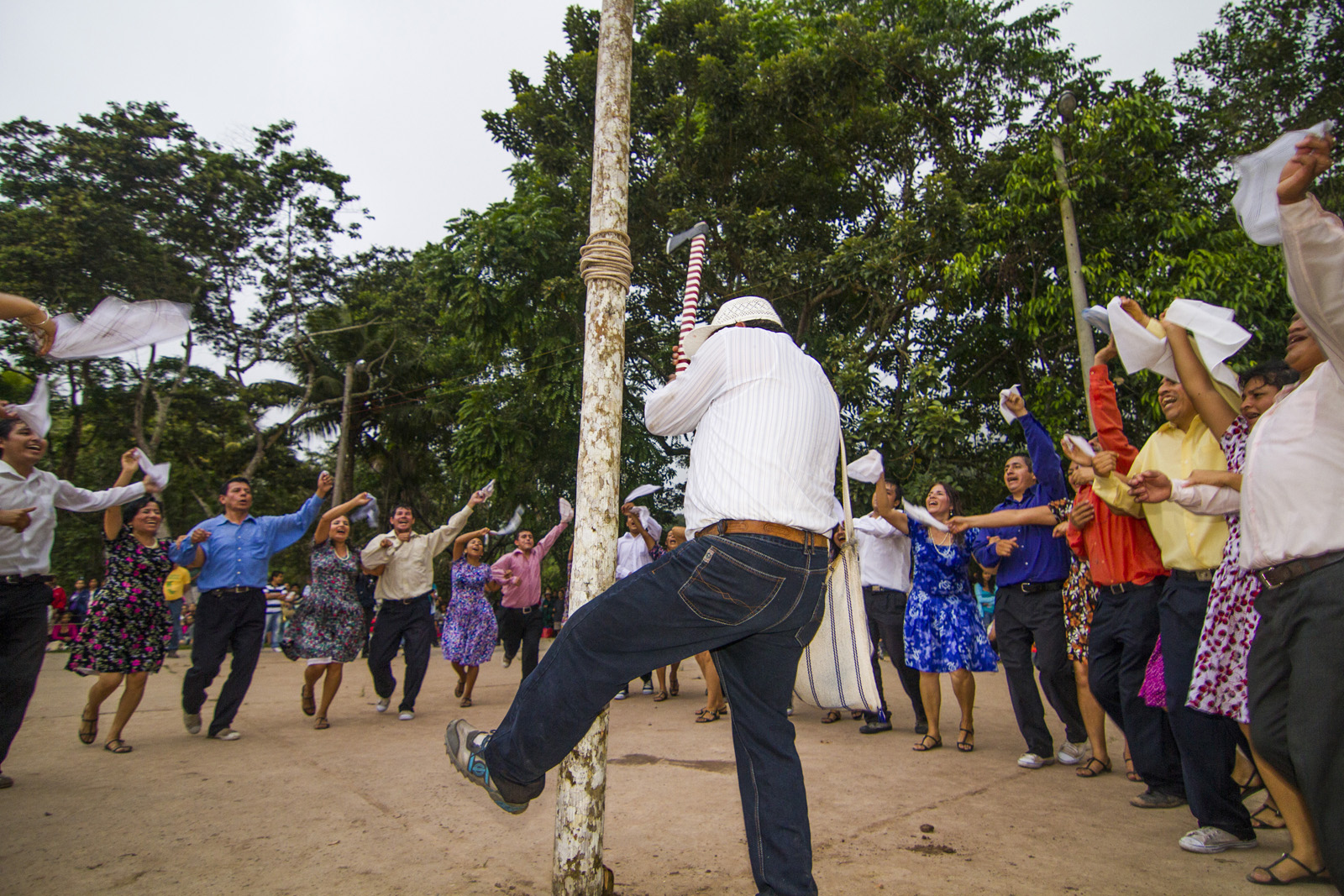Juanes is a traditional dish widely consumed throughout the Peruvian Amazon, especially the High Amazon.
A juane wrapped in cachibou leaf.
It is designed for travelling: pre-cooked food that is wrapped in a leaf, normally from the endemic Cachibou tree (Calathea lutea) - known locally as bijao - which acts as a picnic box for the contents.
The leaf also infuses the food with a subtle, but distinctive flavour.
Locals would carry juanes with them when walking between villages or on hunting trips into the forest. And when Spanish missionaries arrived in the region, they adopted the practice.
According to legend, it was these Spanish missionaries, on their way from Chachapoyas to San Martin, who noticed the similarity of this food parcel to the severed head of St. John the Baptist (San Juan Baptista), leading to the name juane.
The contents of the missionaries’ juane would have been the staples of the indigenous diet at the time: fish, manioc and plantains - the traditional juane de yuca
An unwrapped juane.
Nowadays, juanes most commonly consist of rice, chicken, olives, and eggs that are hard-boiled inside a bijao leaf.
These ingredients reflect a fusion of culinary influences:
Olives and chicken were added by the Spanish.
Rice was brought by Chinese immigrants to Peru, in the late 19th Century
Moreover, each region in the Amazon has their own preferred ingredients and methods of cooking, so that there are myriad types of juanes, including:
Avisba juanes: made of pork and without eggs or olives.
Nina juanes: made of eggs chicken; grilled.
Juane de chonta: includes heart of palm.
Chuchulli juane: rice and chicken innards.
Sara juanes: made with peanuts, corn, and the meat of guinea pig ... or other small forest rodents!
Nor are juanes are just confined to the Peruvian Amazon:
In Bolivia, they are known as dunucuabi.
In Colombia, they are known as maitecusao.
St. John the Baptist has left his mark on the Amazon region in other ways aside from the cuisine. His feast day - La Fiesta de San Juan - is on June 24th, which is celebrated widely in Peru, but particularly vigorously in the Amazon region, where it is a public holiday.
Celebrations in jungle cities such as Iquitos, Tarapoto and Pucallpa often last for days before and after the 24th.
Ceremonial dancing during the Feast of St. John the Baptist.
People like to mark the day with a visit to a local river or lake, for swimming, drinking, dancing and music, in the company of friends and family.
The food item of choice: the juane, of course!




